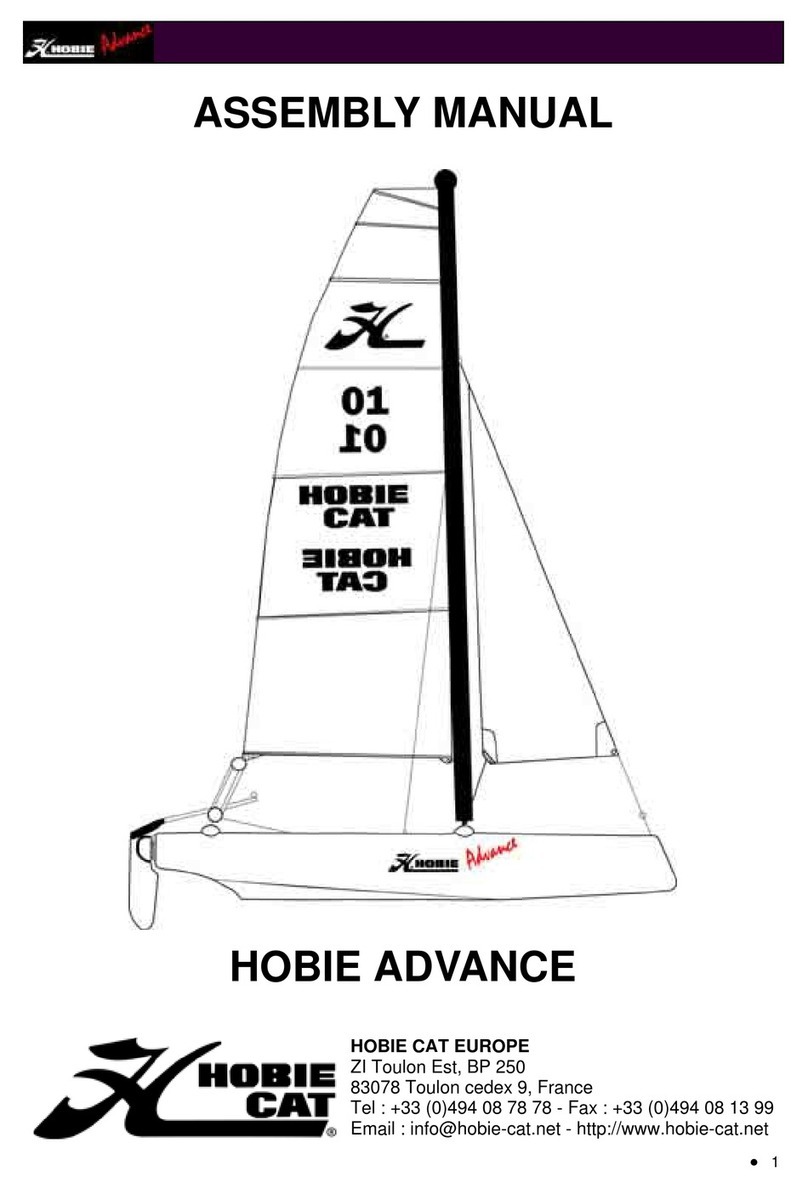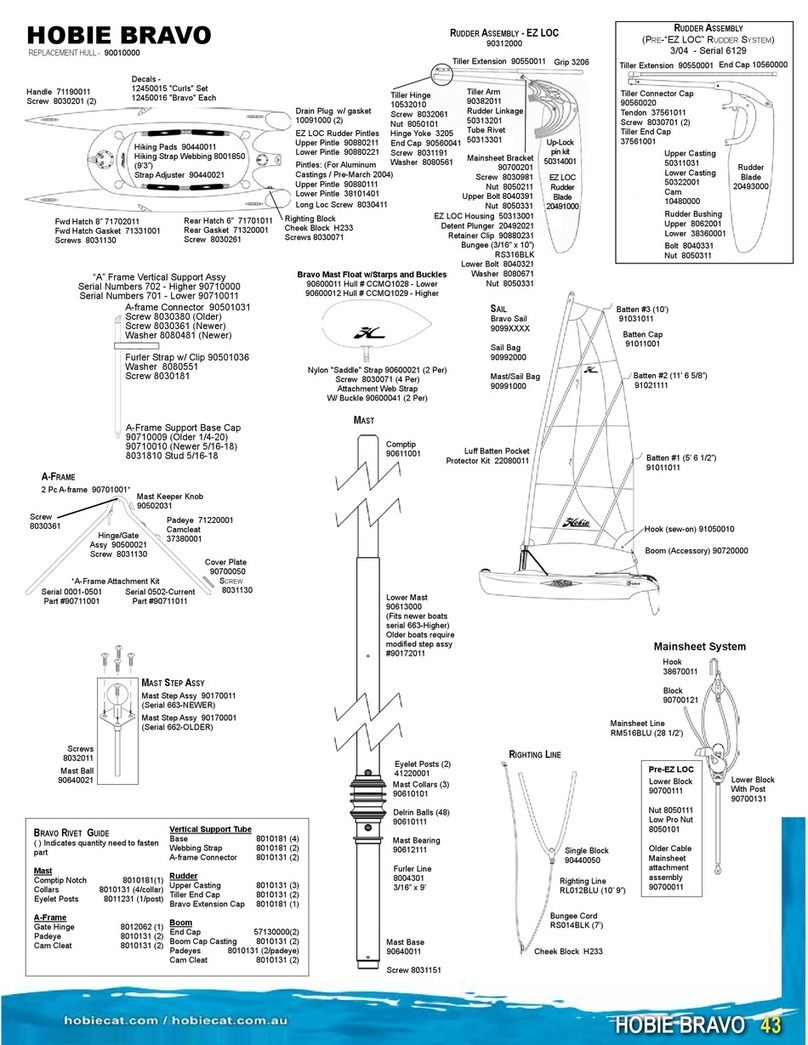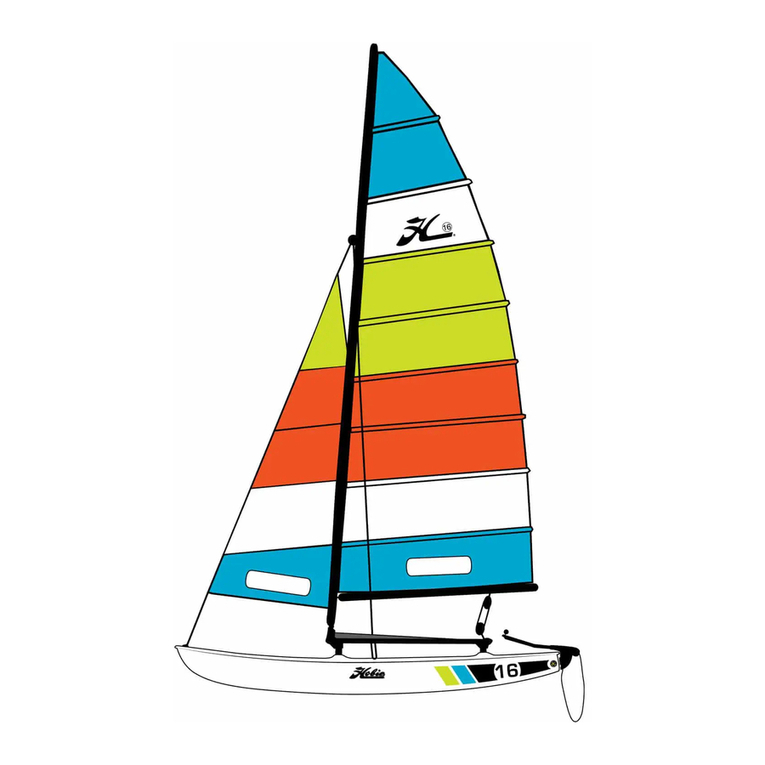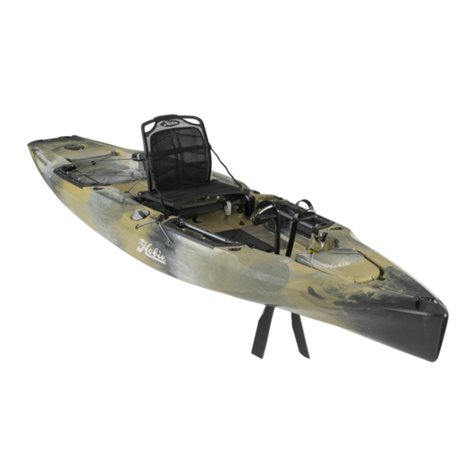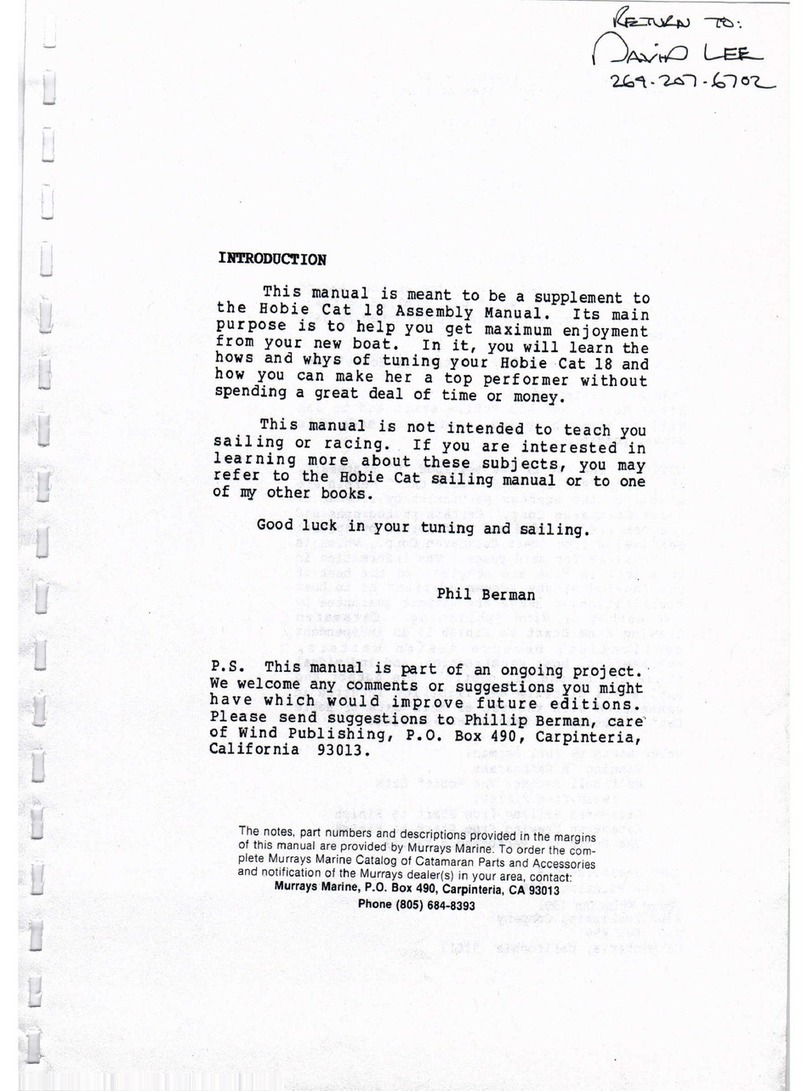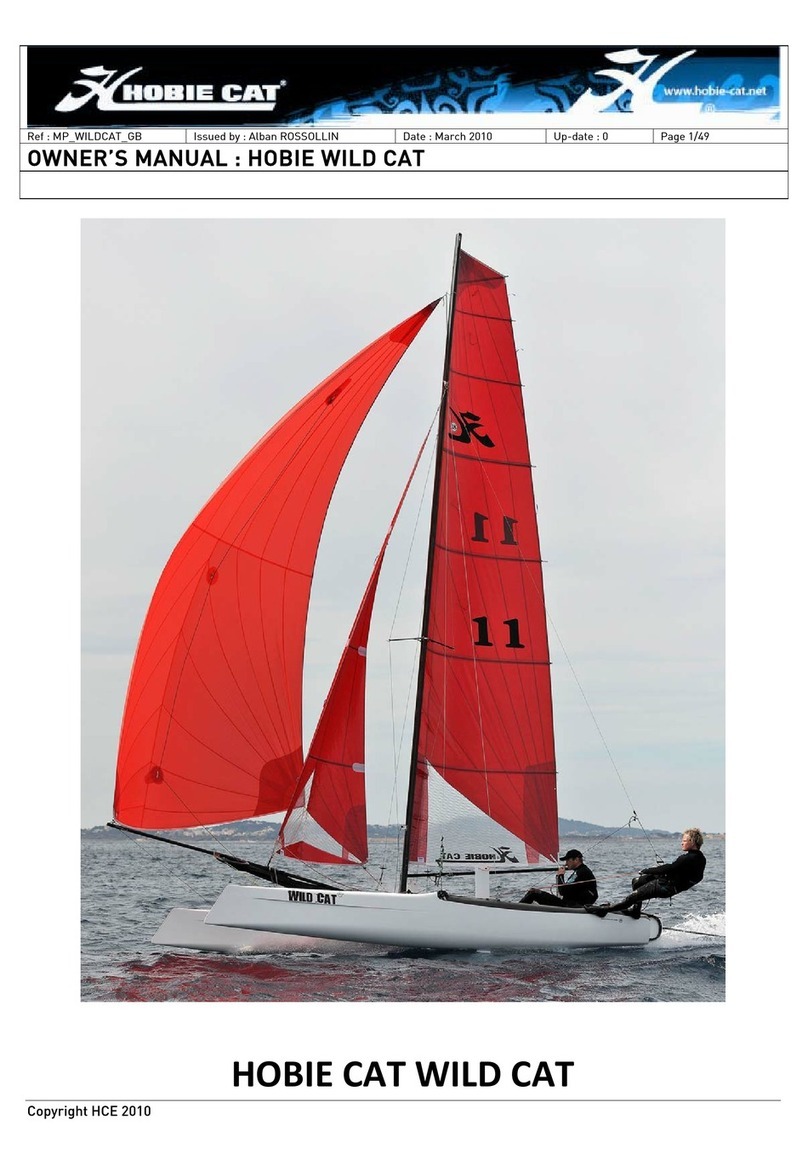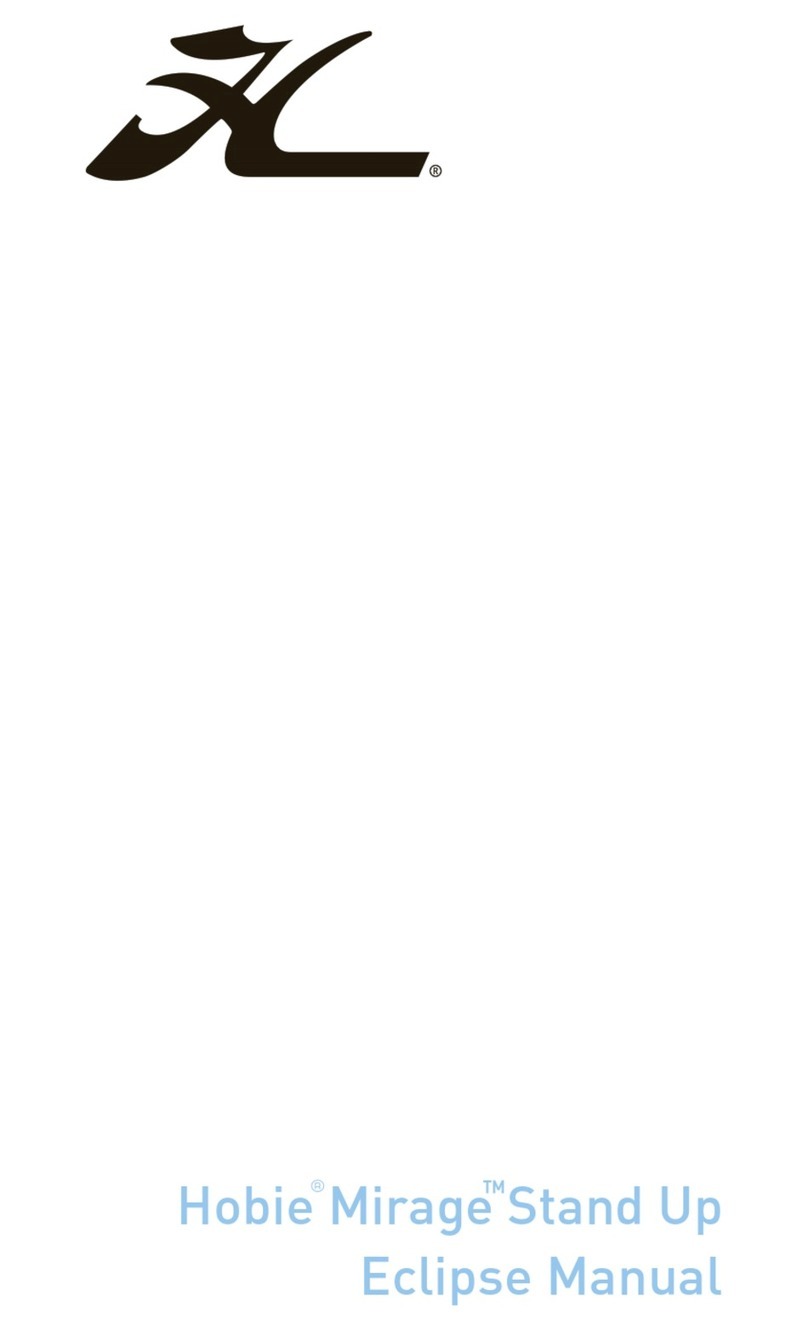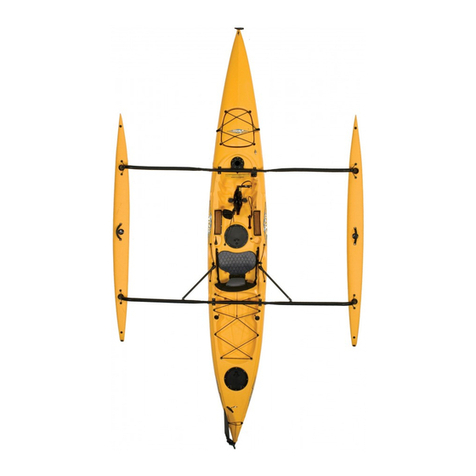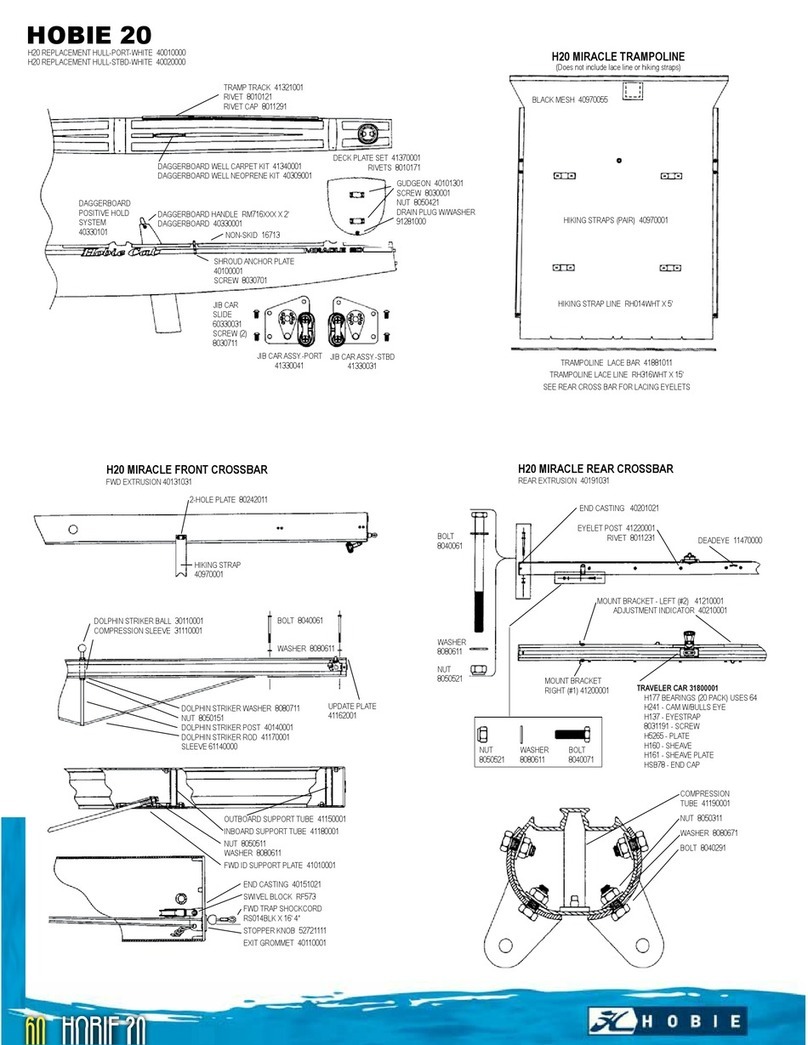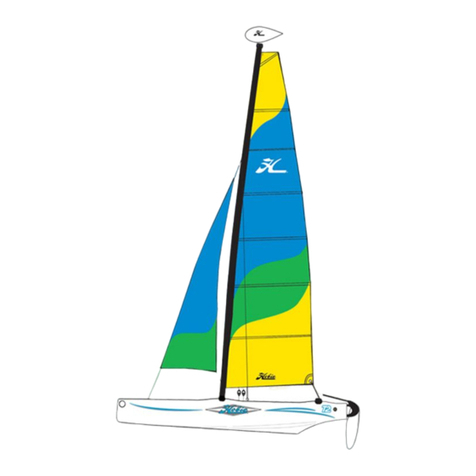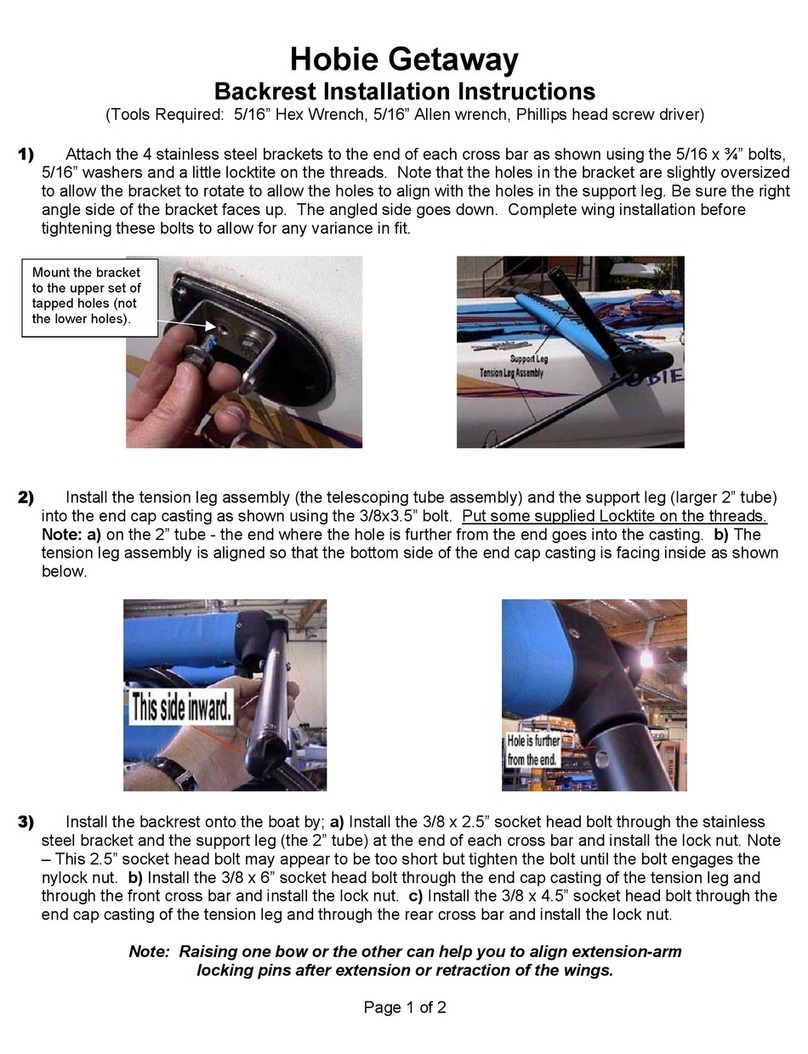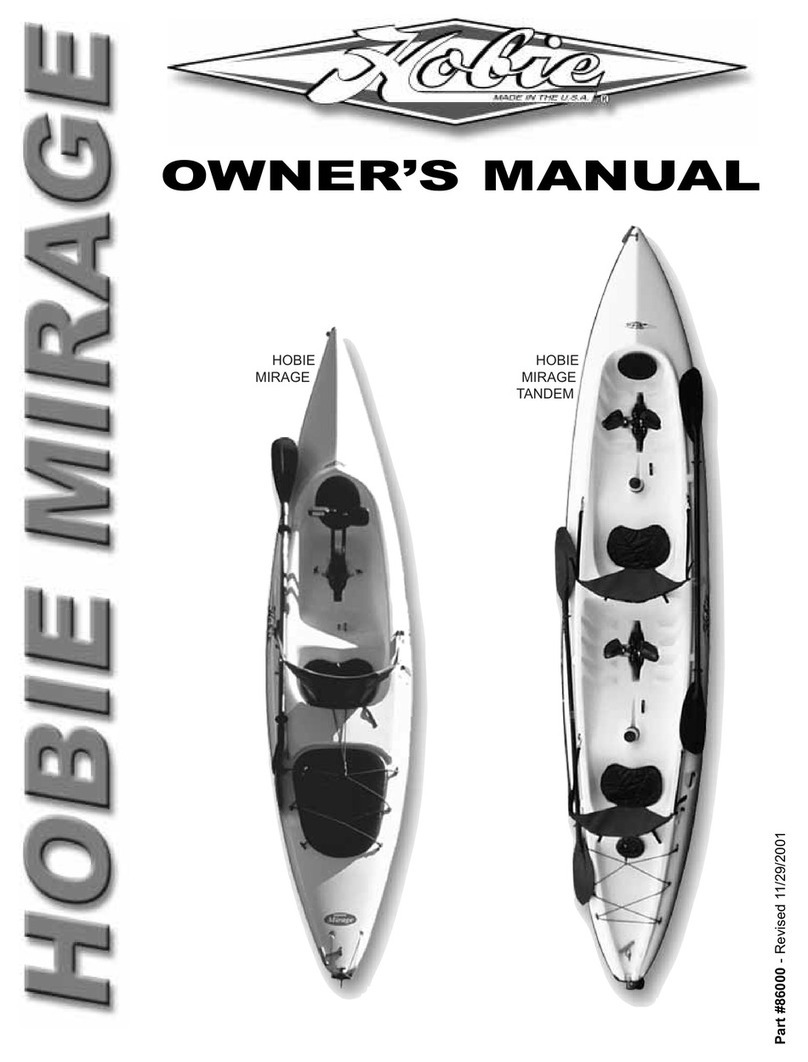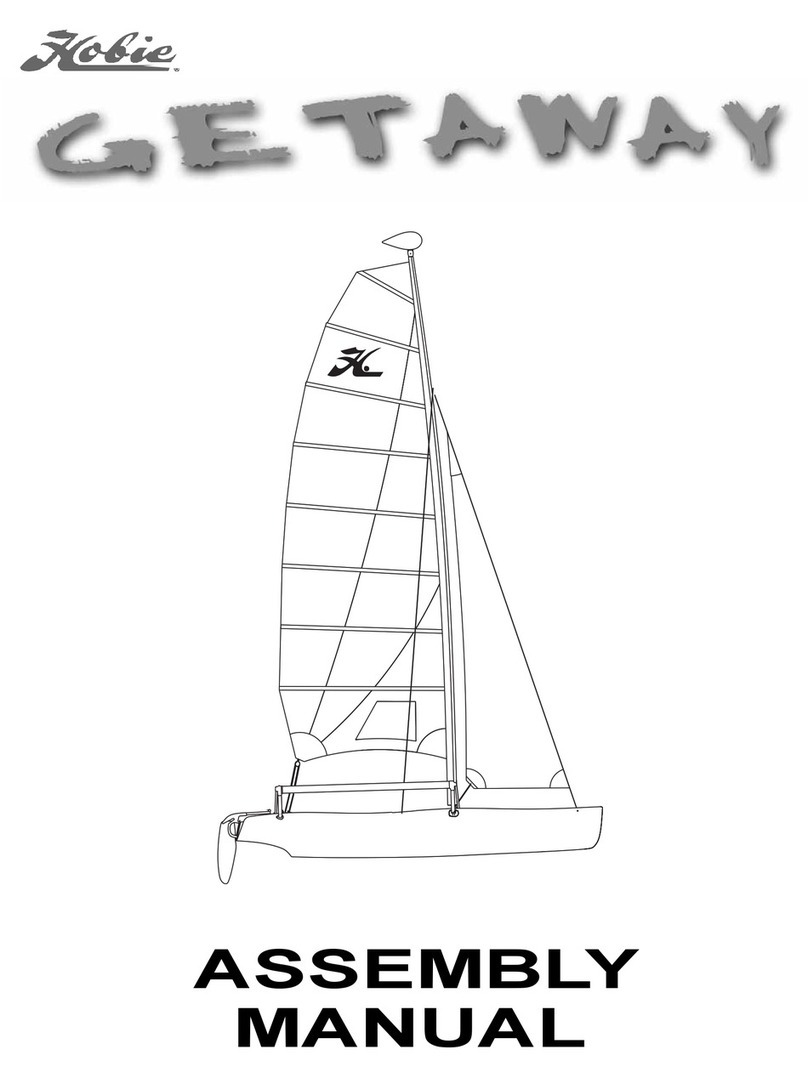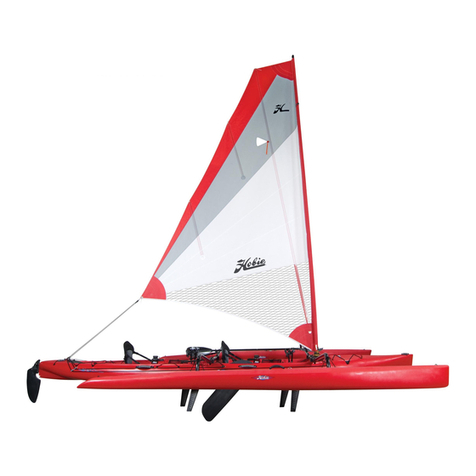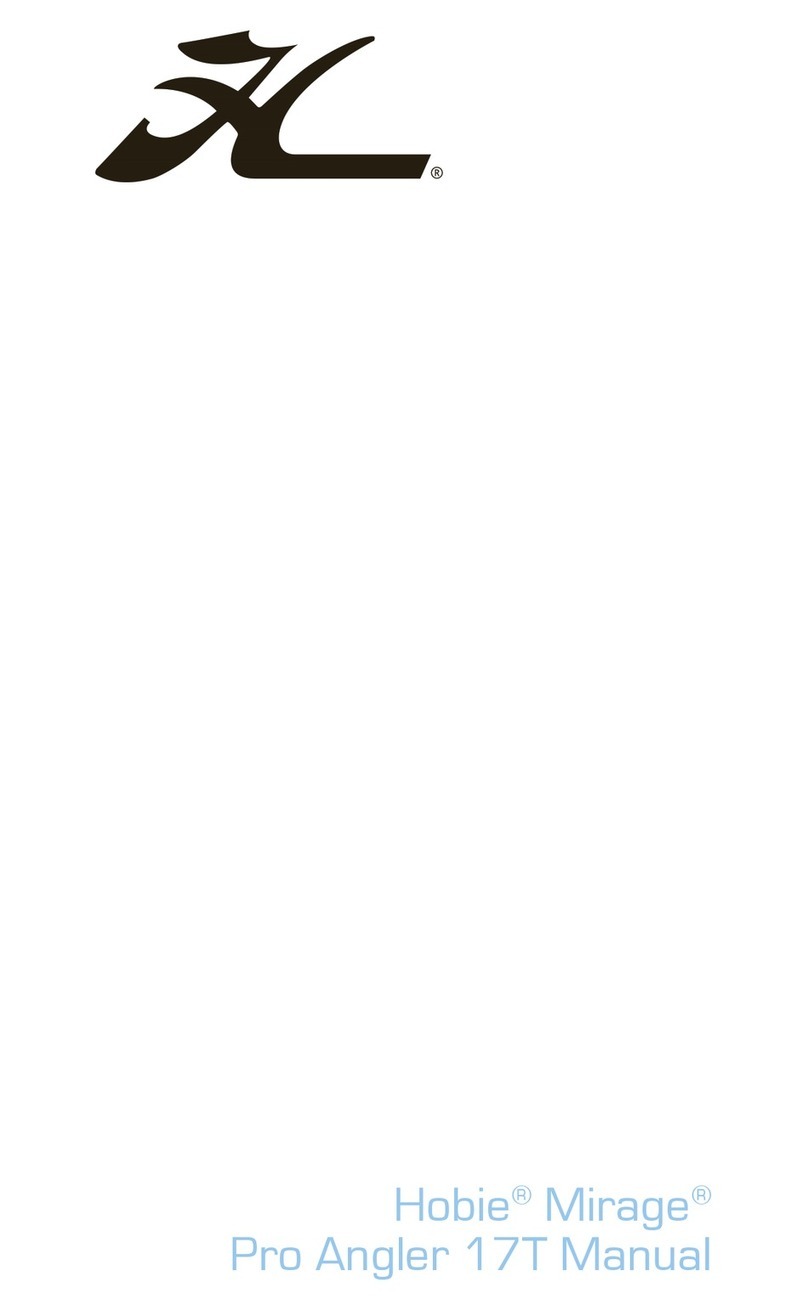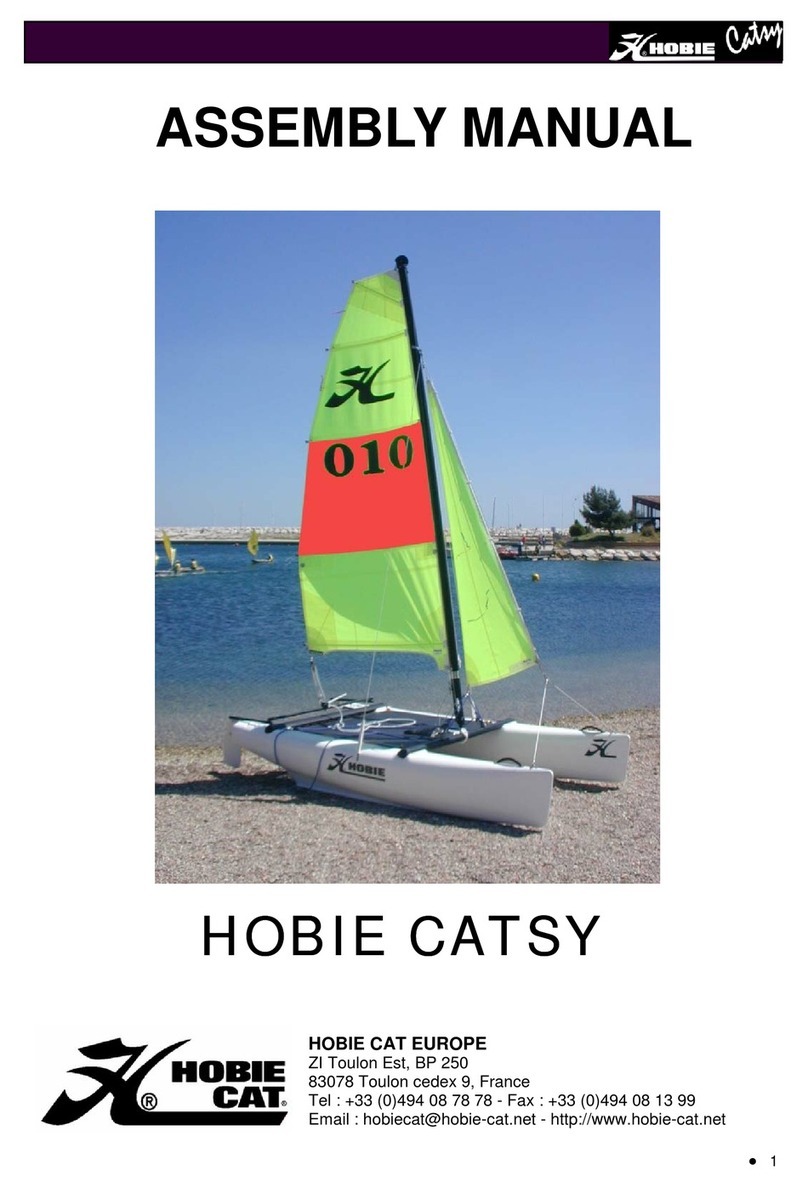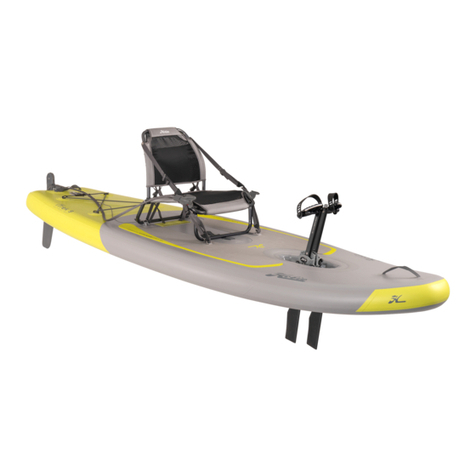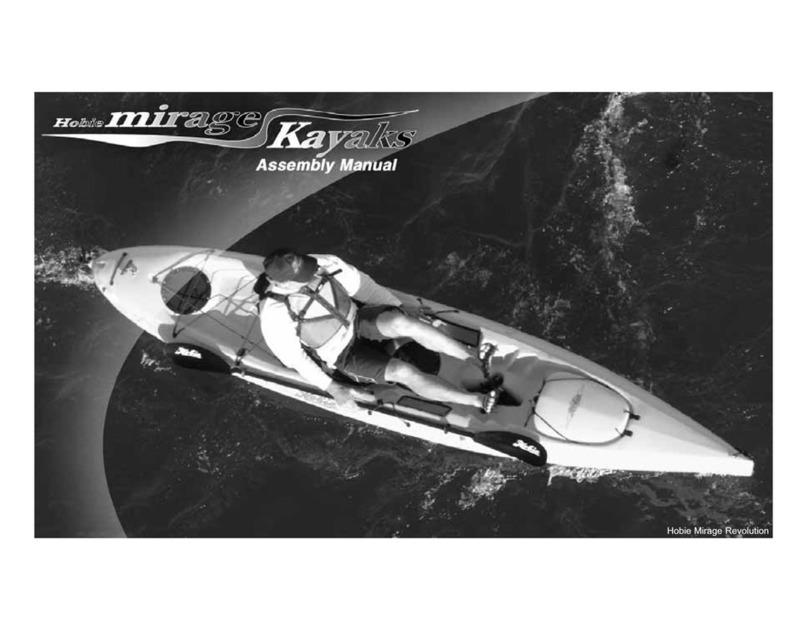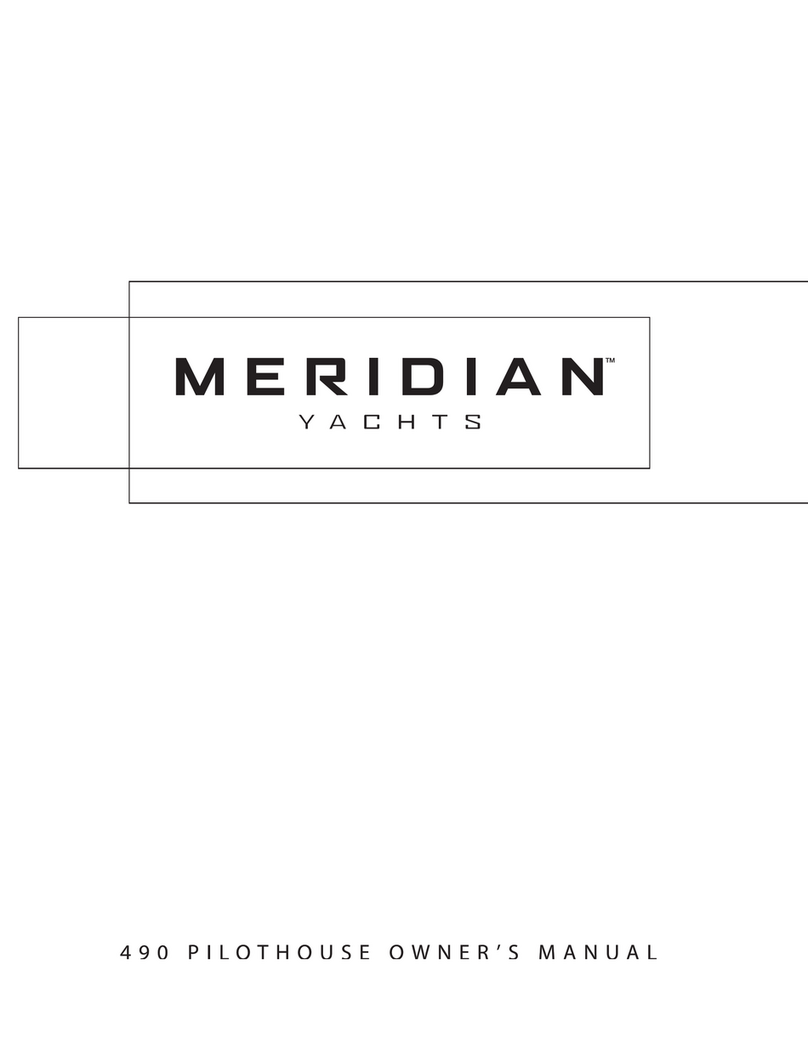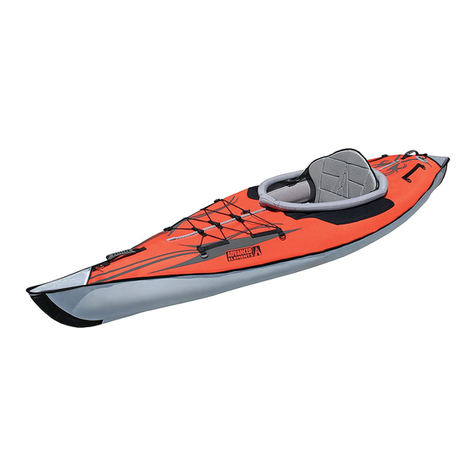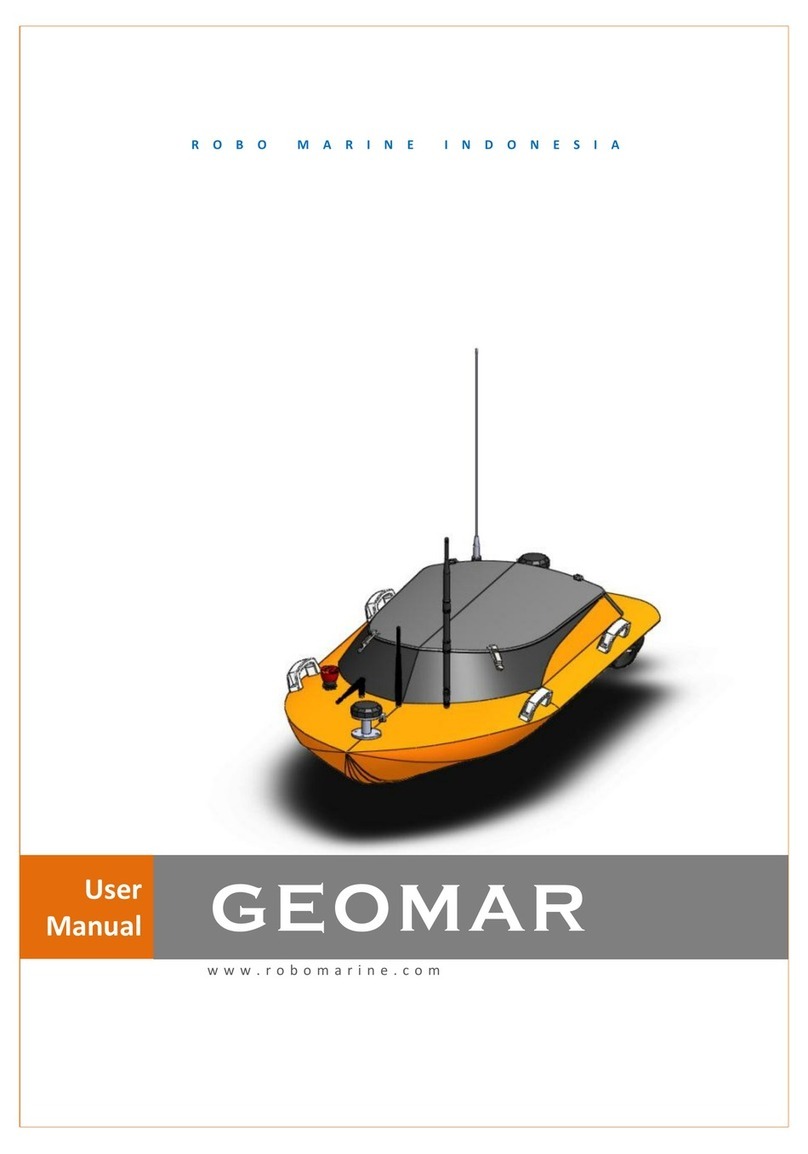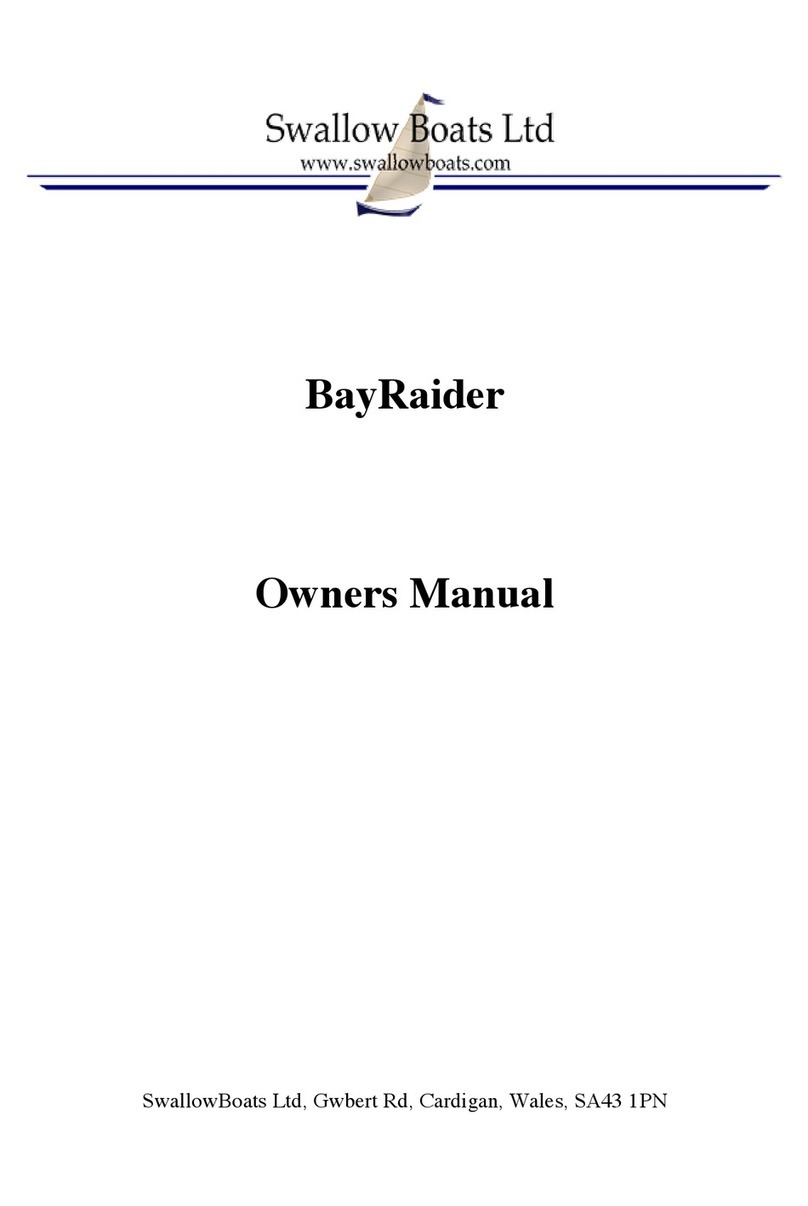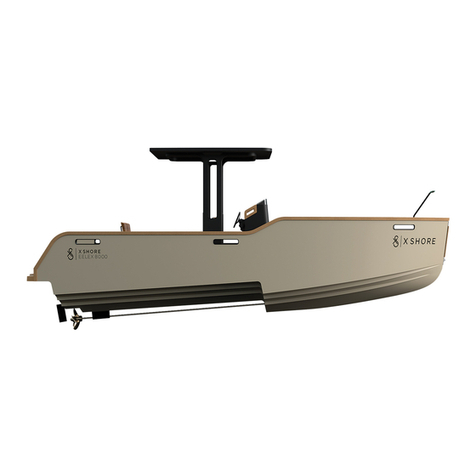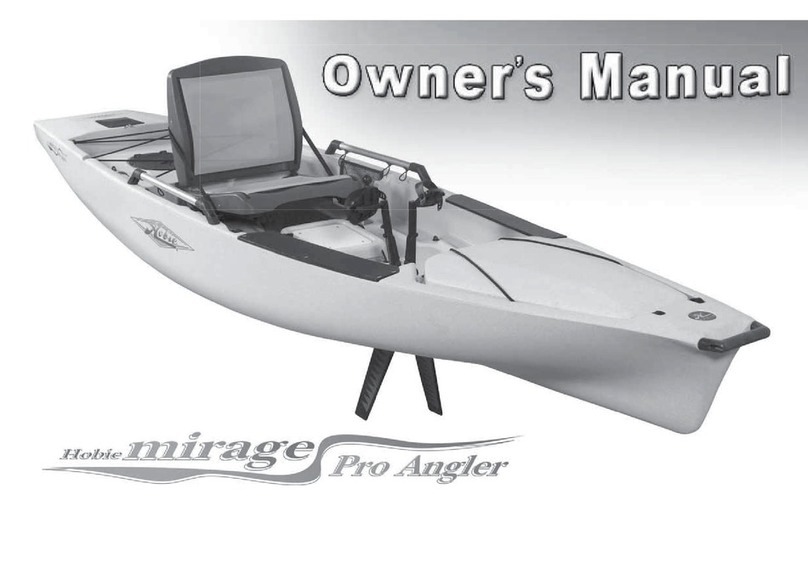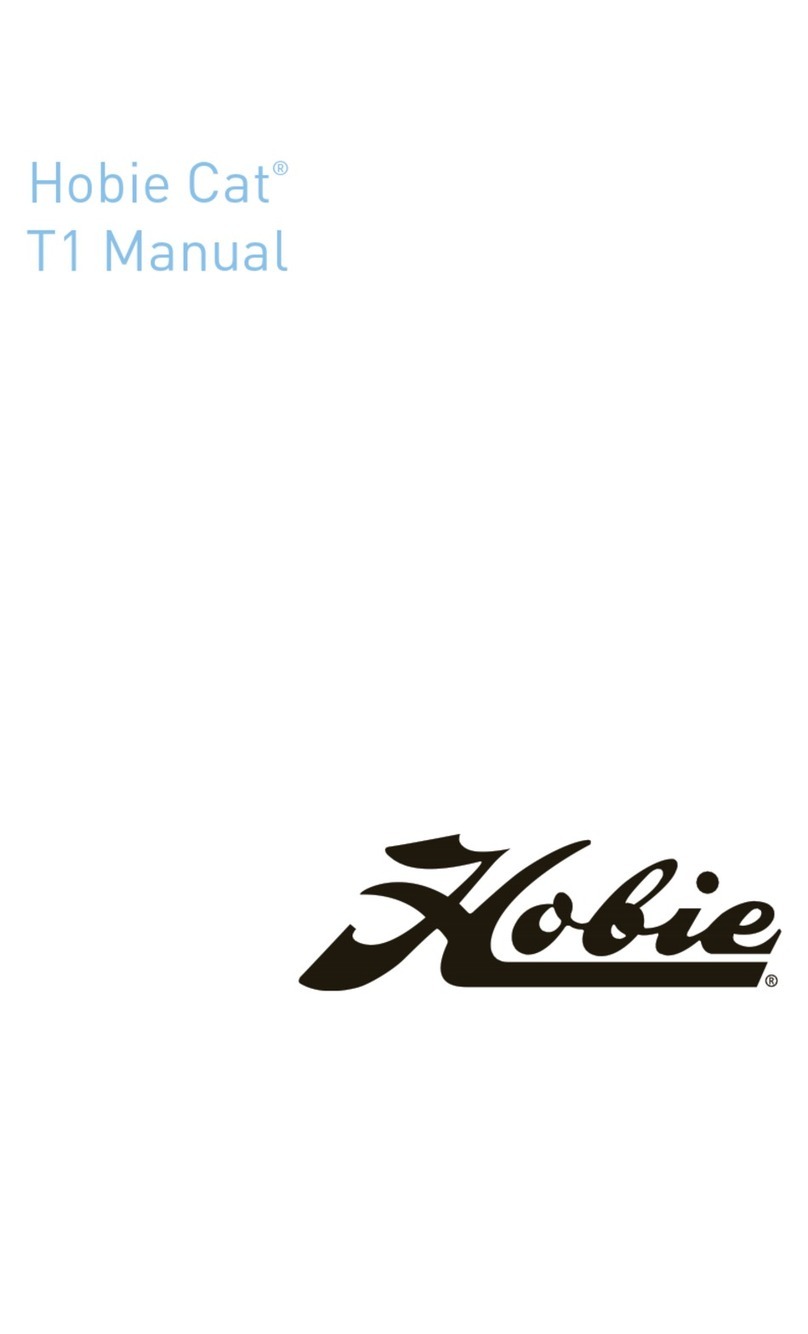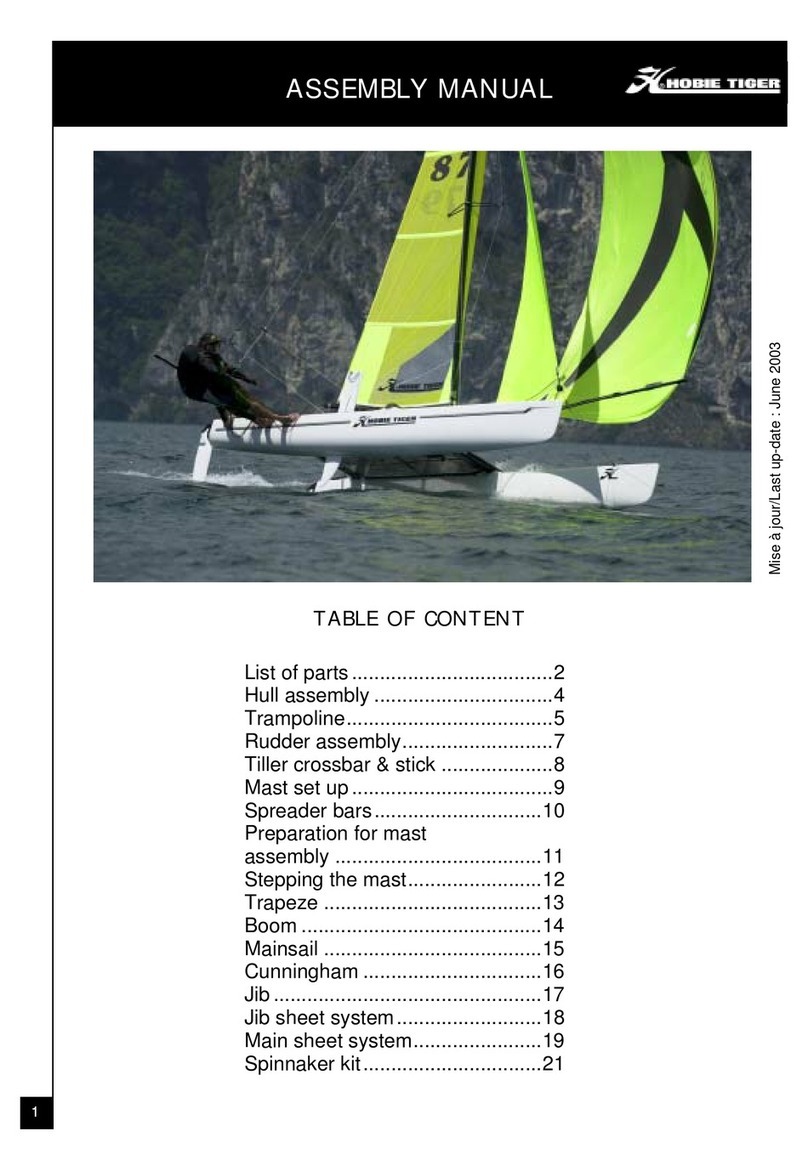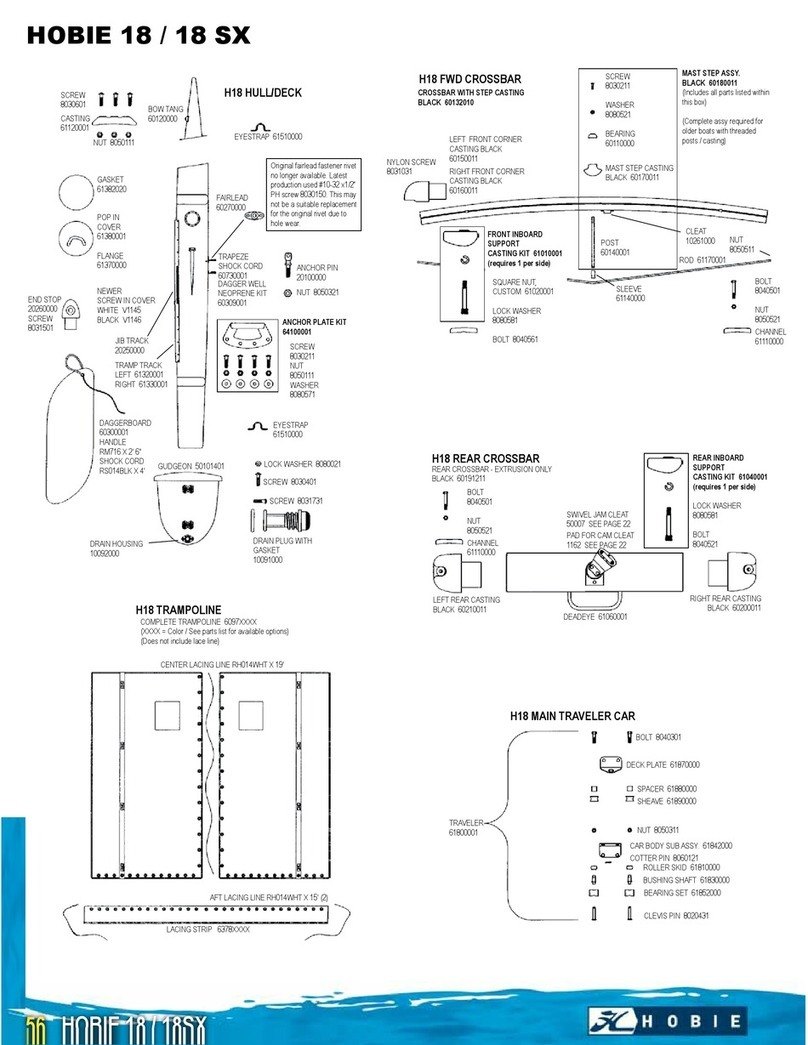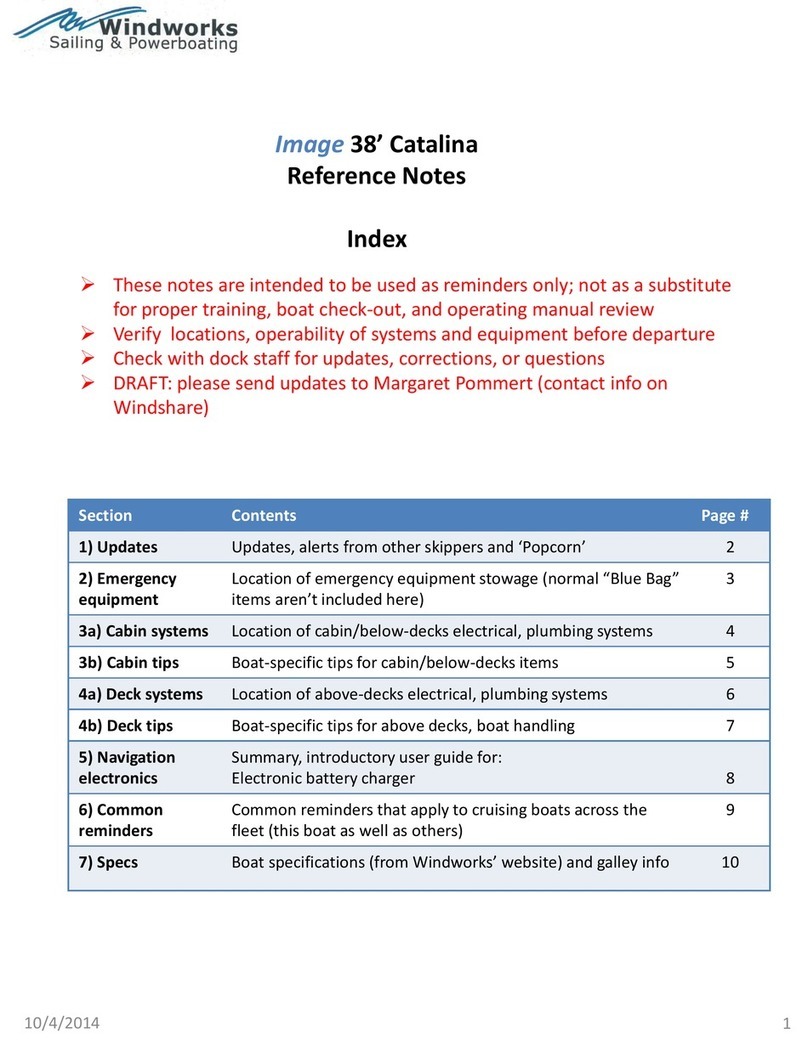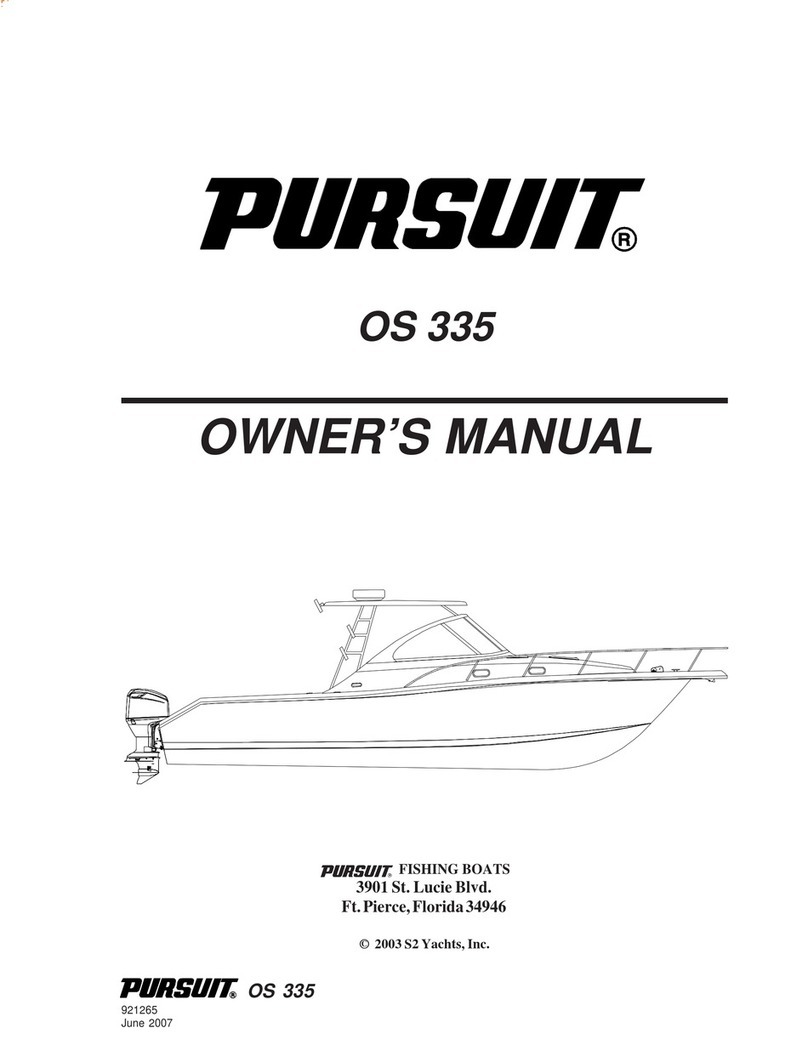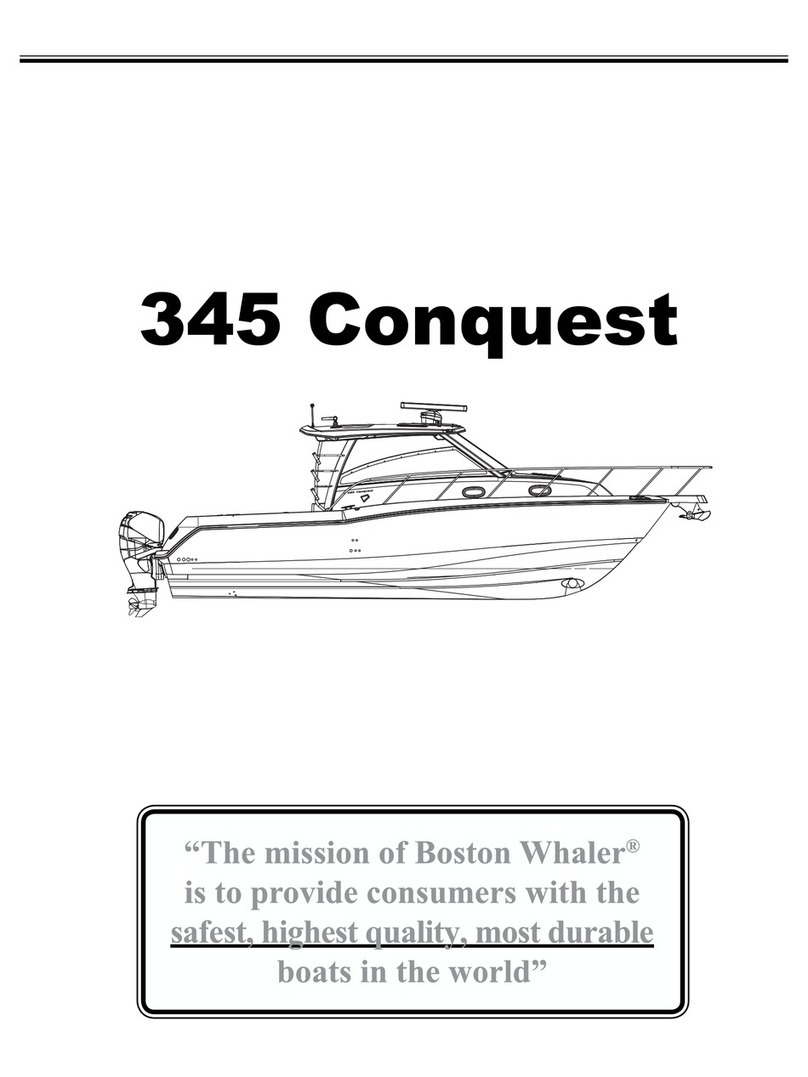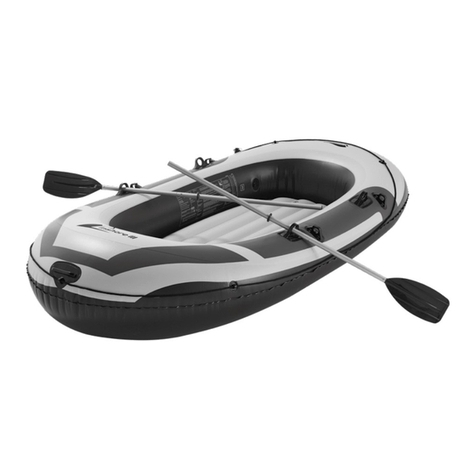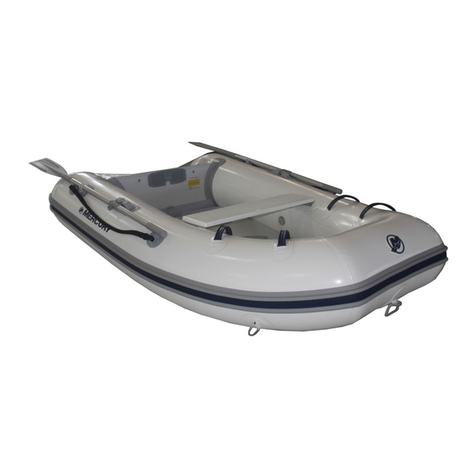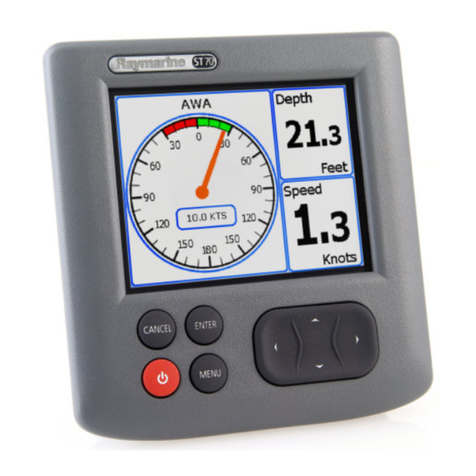PADDLING
These guidelines will help you to get started.
To start, sit in your kayak. Your backside should be all the way
back in the seat and your knees comfortably bent. To find the
proper footwell, straighten your legs all the way out and then
bring them back one “well”. If your legs are too outstretched,
you may experience strain on your lower back. If your knees
are bent too much, you may end up knocking your kneecaps
while paddling.
For proper hand placement on your paddle, start with your
hands about a shoulder’s width apart and centered. If you
place the center of the paddle on top of your head, your
elbows should form slightly less than a 90 degree angle.
There should be an equal amount of paddle shaft beyond
each of your hands.
Some paddles may have the blades offset, or “feathered”, at
some degree from parallel. A feathered paddle presents less
surface area for the wind to catch as that blade moves
forward through the air. Some paddles have a flattened spot
along the paddle shaft that will help keep your “control” hand
in a fixed position. However, a special technique must be
used to get each blade in the water. If the paddle is right-hand
controlled (when the right blade is held vertical, the left blade
“scoop” is pointed mostly up), the right hand will stay tight and
the left hand loose. To learn the process, hold the paddle tight
in your right hand and loose in your left. Using the right hand,
rotate the paddle blade back and forth; it should spin in your
left hand. Now take a stroke on your right, then cock your
right wrist back (left hand staying loose and somewhat open)
and take a stroke on your left. If using a left-hand control
paddle, reverse the process, the left hand stays tight and the
right hand stays loose.
The basic paddle stroke will give you forward power. Place a
paddle blade in the water near your toes. Pull the paddle
blade back alongside the boat to approximately your hip area
while your opposite hand and paddle blade move forward.
Then lift the first paddle blade out of the water while lowering
the second blade into the water and take a stroke with the
other side.
If you pull the paddle out and away from the hull in an arc, it
will force the bow of the boat to swing away from the paddle
blade. This is called a sweep stroke and is used to turn the
boat.
MORE PADDLING TIPS
Hobie kayaks are very easy to use and very forgiving. By
beginning in calm water, you can quickly get the feel of the
boat and paddle techniques. Practice getting in and out of the
boat by yourself.
Relax your hands when paddling; a tight grip is not
necessary!
Sit with good posture while keeping your torso vertical.
Choose a footrest position that will allow your knees to be
slightly bent.
For greater efficiency use not only your arms, but your torso
and shoulders as well. Start out easy until you get the feel of
the paddle and the steering strokes. Most experienced
paddlers use an offset (feathered) paddle, but beginners may
prefer to keep the paddle blades square.
STORING YOUR HOBIE KAYAK
Hobie has chosen a blend of plastic that has an added
measure of ultraviolet inhibitors to provide superior protection
from ultraviolet light. However, to ensure extra years of
flexibility and bright colors, avoid storing the boat in weather
or direct sunlight.
Kayaks should be stored on edge, upside down on the
cockpit rails, standing on end. When hanging your kayak,
hang it upside down, run straps around the boat, near the
cockpit. A word of caution: hanging by the scupper hole(s)
may cause distortion; and hanging from the handles may
place undue strain on them. Storing the boat bottom side
down may also cause distortion. Kayak storage systems are
available from your dealer. Pad eyes are NOT intended for
hanging or for use as tie downs.
To secure your kayak, simply run a cable through a scupper
hole and lock it to something secure.
TRANSPORTING YOUR HOBIE KAYAK
One of the easiest ways to transport your Hobie kayak is to
purchase a roof rack from your dealer. This normally involves
a set of crossbars that attach to the car via the rain gutters or
adapter clips mounted to the door frame. They come with a
wide variety of attachments from kayak saddles to stackers.
The racks can be used without the attachments but the racks
should be padded. To help prevent distortion, place the
kayak, cockpit side down, on top of the rack. It is best if the
crossbars contact the cockpit sides and not the deck areas.
Straps can then be laid across the boat and tied to the bars.
Saddles cradle the boat and often come with their own
straps. Stackers allow multiple boats to be placed on their
sides without falling over.
An alternative to traditional rack systems are soft racks. They
tend to be less expensive and will work with most cars. These
are pads mounted on straps that sit between the kayak and
the roof of your car. Some styles have a strap that wraps
around the kayak and others strap the pad to the roof. To tie
the boat to the car, straps are run through the car doors and
the boat is tied to the roof as well as the bumpers, front and
rear. Over-tightening the straps may cause dents in the roof
of the car.
A line run from the bow and stern of the boat to each bumper
is required. If your bumpers do not have a gap to pass a rope
around, look underneath. There should be a loop of metal,
which is used by car transports such as tow trucks.
Many people like to use the scupper holes to tie the boat to
the car. This helps prevent the boat from sliding back and
forth or the tie down rope from slipping off the kayak. This is
a perfectly acceptable method for tying the boat down.
7
